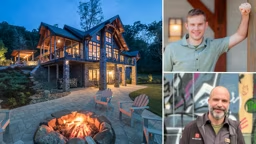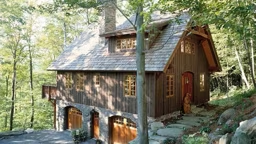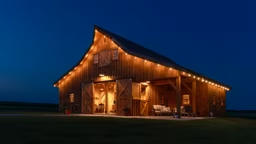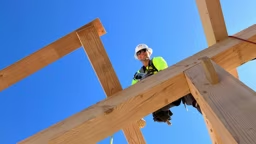Energy efficiency has long been touted as one of the main benefits of building a timber frame home, and in a world where green standards can be a bit fuzzy, these homes truly embody what it means to be a leader when it comes to creating a comfortable and cost-effective home that’s mindful of the environment.
“I often describe a timber home by saying it’s like throwing a blanket over a fine piece of furniture. The furniture, much like the timber frame, is nice and cozy under that blanket,” explains Jonathan Orpin, founder and CEO of New Energy Works.
But what about sustainability? How do timber homes measure up in the larger arena of green building?
It’s not just a finished timber home that scores high on the energy-saving chart, the fabrication and construction process does, as well. To truly build “green” is to create a structure that’s environmentally responsible and resource-efficient throughout a building’s life cycle, from siting to design, construction, operation, maintenance, renovation — even demolition. How sustainable your home is will be up to you, but the fact that timber home construction intrigues you is a good place to start.
“Wood grows naturally and it is the only major building material that’s renewable and sustainable over the long term,” explains Dwight Smith, founder of Hamill Creek Timber Frames in British Columbia, Canada. It also outperforms steel and concrete when compared using life-cycle assessment (LCA) methodology, which, according to the Environmental Protection Agency, is an internationally recognized technique used to assess the environmental aspects and potential impacts associated with a product, process or service. When it comes to homes, the LCA approach looks at the materials and assemblies used, and evaluates them over the course of their entire lives, based on measurable environmental impact. Using this methodology, according to Dwight, study after study has shown that wood is better for the environment than steel or concrete in terms of global warming, resource use and embodied energy, as well as air and water pollution avoidance.
Because most of that wood will be located inside the home, long-term maintenance requirements for a timber home should be low, and opting for reclaimed or recycled materials is another way to boost your home’s green appeal. Because of their easy installation, structural insulated panels (SIPs) combined with a timber frame, require less energy and produce less material waste during your build.
Perhaps the biggest factor contributing to a timber frame’s sustainability, though, is its long-lasting qualities. History has shown that, with proper design and maintenance, wood structures can deliver centuries of reliable service; plus, we now have additional precautions against insect and fungal damage. And although modern machinery helps to cut and form the beams and pegs needed to frame today’s timber homes, most companies still use the same techniques that were used in the historical timber frames that are still standing today, showing that this building method is proven to stand the test of time. It doesn’t get more sustainable than that.
See Also: A Naturally Energy-Efficient Jewel











